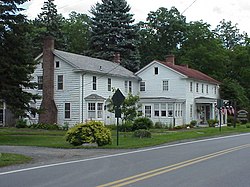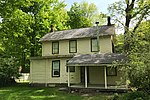Minisink

The Minisink or (more recently) Minisink Valley is a loosely defined geographic region of the Upper Delaware River valley in northwestern New Jersey (Sussex and Warren counties), northeastern Pennsylvania (Pike and Monroe counties) and New York (Orange and Sullivan counties). The name was derived by Dutch colonists from the Munsee name for the area, as bands of their people took names after geographic places which they inhabited as territory throughout the mid-Atlantic area. Originally inhabited by Munsee, the northern branch of the Lenape or Delaware Indians, the area's first European settlers arrived in the late seventeenth and early eighteenth centuries and were Dutch and French Huguenot families from colonial New York's Hudson River Valley. The term "Minisink" is not used often today. It is preserved because of its historical relevance concerning the early European settlement of the region during the American colonial period and as an artifact of the early "first contact" between Native Americans and early European explorers, traders and missionaries in the seventeenth century. Much of the historical Minisink region has been incorporated into the Delaware Water Gap National Recreation Area after defeat of a controversial dam project proposed to be built by U.S. Army Corps of Engineers on the Delaware River near Tocks Island.
Excerpt from the Wikipedia article Minisink (License: CC BY-SA 3.0, Authors, Images).Minisink
McDade Recreational Trail, Lehman Township
Geographical coordinates (GPS) Address Nearby Places Show on map
Geographical coordinates (GPS)
| Latitude | Longitude |
|---|---|
| N 41.093454 ° | E -74.992247 ° |
Address
McDade Recreational Trail
18314 Lehman Township
Pennsylvania, United States
Open on Google Maps










